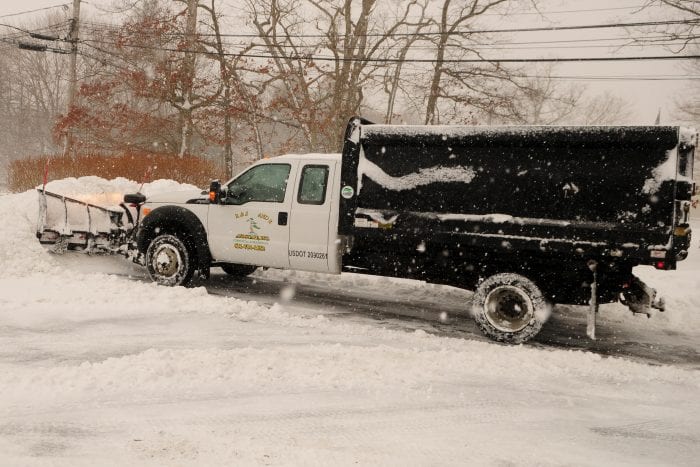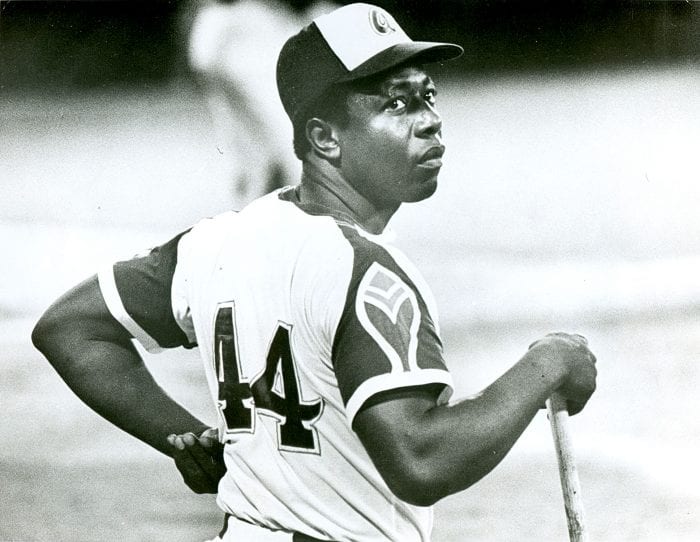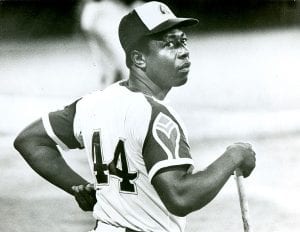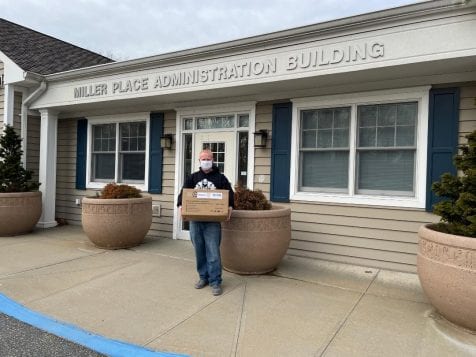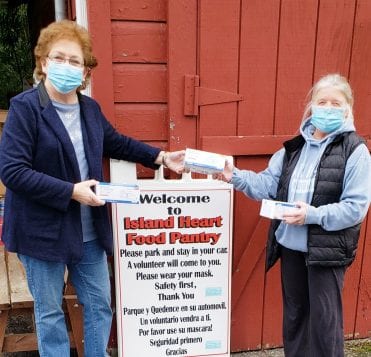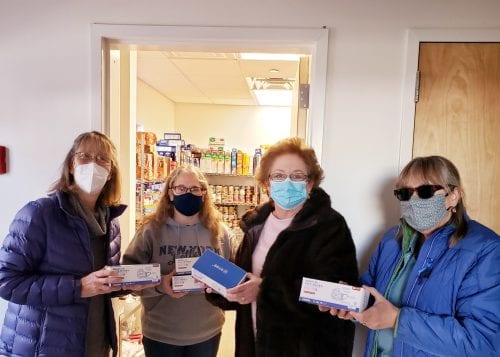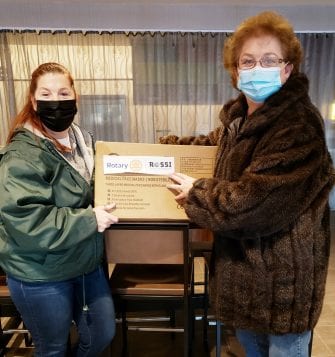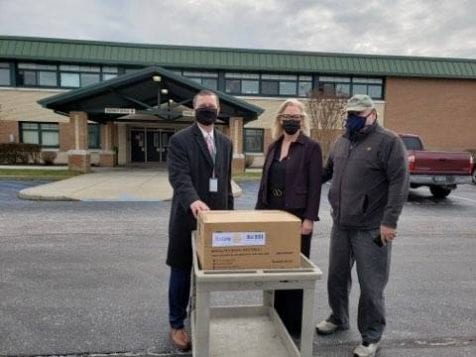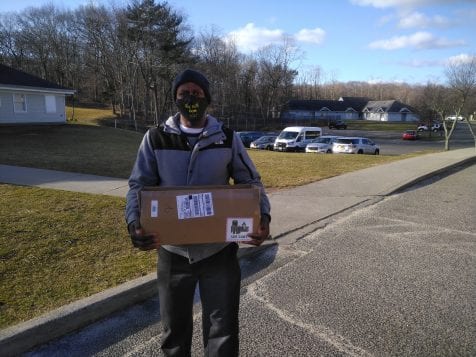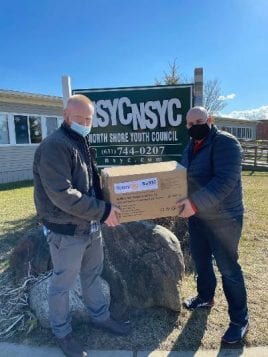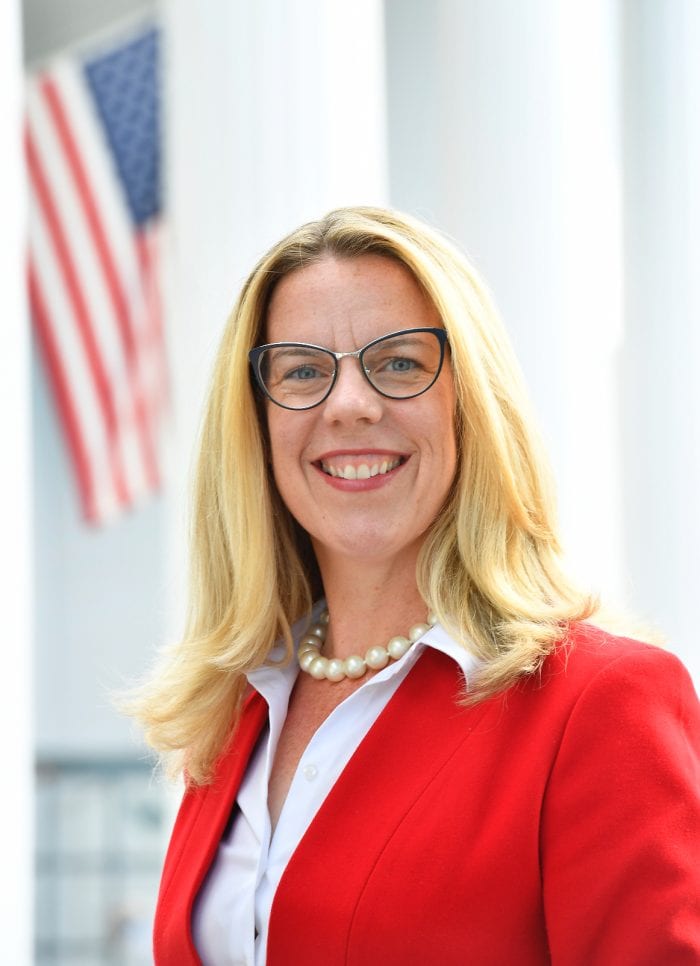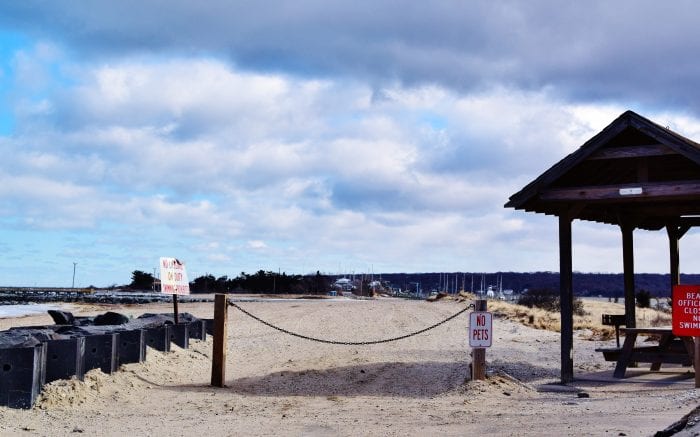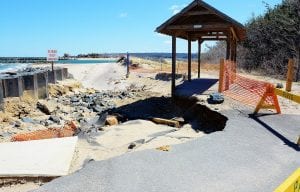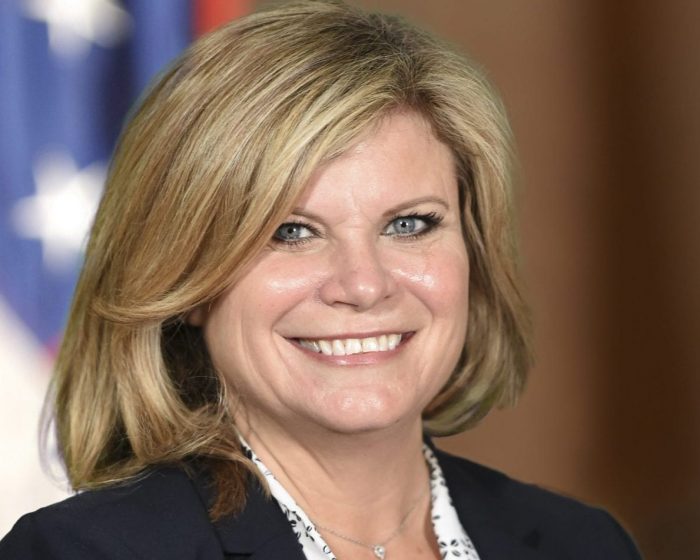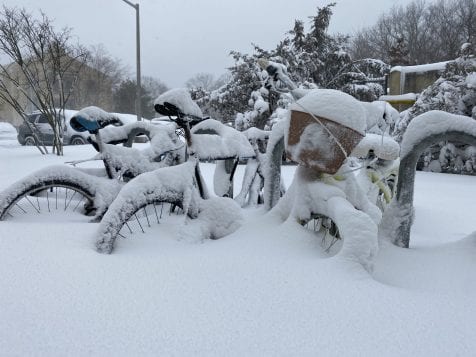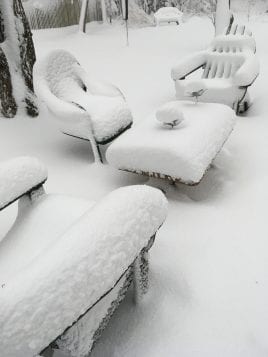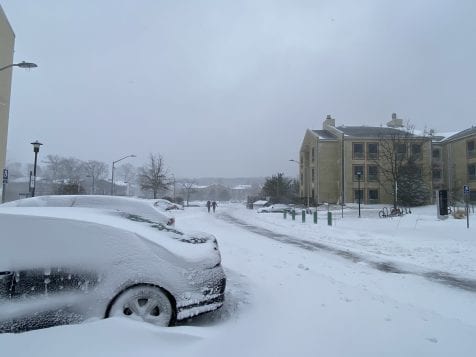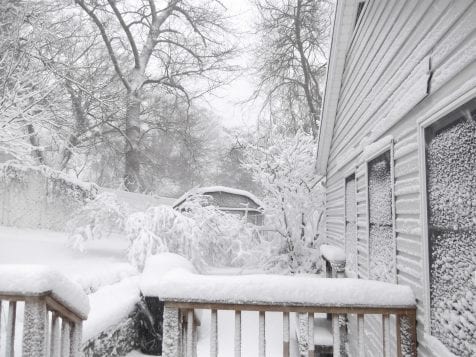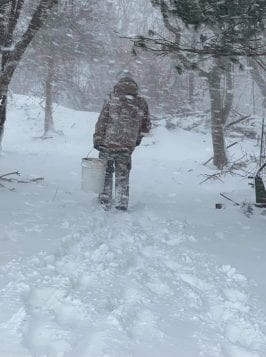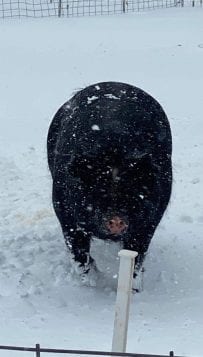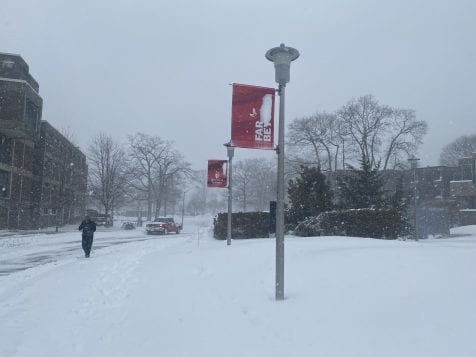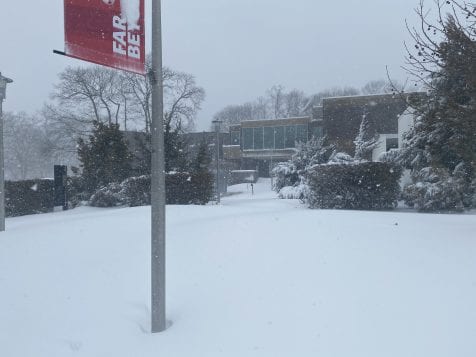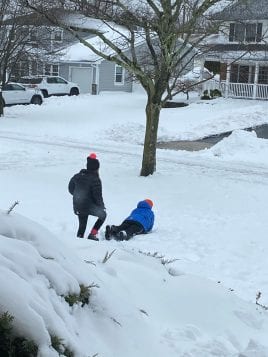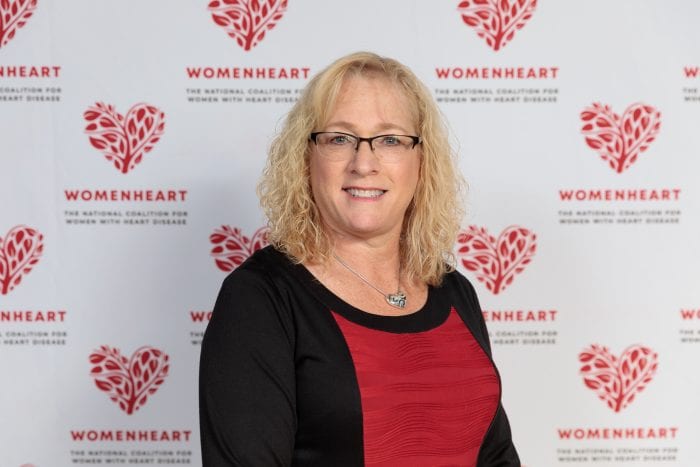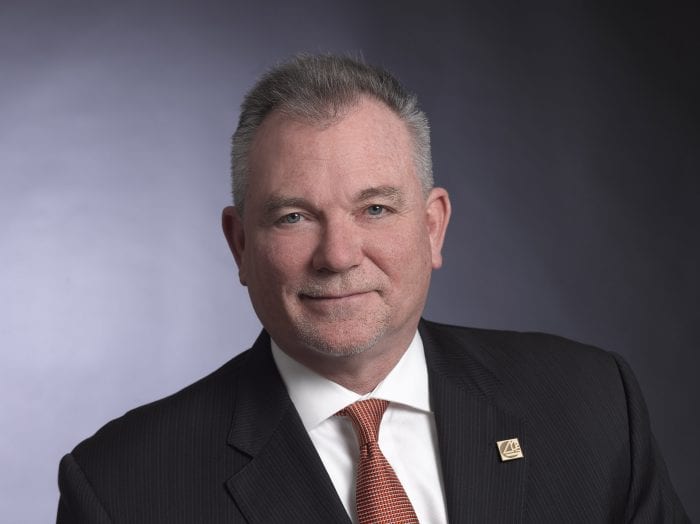In recent weeks, two large snowstorms have hit Long Island back-to-back. While Town of Brookhaven Superintendent of Highways Dan Losquadro (R) said the town is doing well, when it comes to plowing and cleaning up, some residents say otherwise.
Melissa Neff of Port Jefferson Station said she has lived in the Town of Brookhaven her entire life and never saw the roads this bad. Her complaint is typical of many residents.
“Ever since I could remember there’s always been plows going up and down the streets,” she said. “It doesn’t have to be perfect, but it needs to be drivable.”
Losquadro said all of the town’s vehicles are equipped with GPS, which shows him the times the plows go to each area.
“During the day we had people calling us on Monday insisting we didn’t plow,” he said. “But when you had snowfall rates of 2, 3, 4 inches an hour and plows go through areas with 40-to-50 miles-per-hour winds, they got completely covered.”
And with the larger storm that occurred the first week of February, that he said lasted more than 30 hours, he claims he met his goal.
“Within 24 hours of stopping, my goal is to always have every road passable — not pushed all the way back to the curb — but to have every town passable,” he said.
But Neff said she lives on a main road, right off of Route 347, and it was not passable.
“I’m an essential employee — I have to go to work,” she said.
And when she did, she said, she ended up damaging her new car thanks to a block of ice that was not pushed far enough aside.
“To see the roads like that and to damage my car — that’s not how you thank essential employees,” she said.
Neff said she is mad and wants answers.
“The taxes we pay in the Town of Brookhaven should cover all of the Town of Brookhaven. … We have a much larger town, and you should have enough taxpayer money to clean a town of this size.”

Losquadro said that he had approximately 200 highway employees working in the field during Sunday’s latest storm. Due to the COVID-19 crisis, about 10 of his workers were quarantined. He added that after the first big snowfall, within days he was on the phone with vendors trying to secure additional equipment.
“Because of the complications of two back-to-back storms, there were some areas we still are working on — but that was just because 22 inches of snow came down in one week,” he said. “That’s a little bit irregular for Long Island. We don’t deal with it frequently, especially over the last two years where we haven’t had a lot snow.”
Losquadro said that he thinks people have gotten “spoiled” with the lack of snowfalls the last couple of seasons.
“This is Long Island, New York. We can get very little snow, or we can get a lot of snowfall,” he said.
Neff said she believes that he needs to reach out to more private contractors.
“He has the money for it,” she said. “I don’t know what he does with the money, but he should be reaching out to more private contractors before the snow occurs and pay them on time, so they come back to Brookhaven during the next storm.”
Losquadro responded that the number of available hired contractors is down because of several reasons. He said the lack of snowstorms over the last couple of years has played a part: Outside contractors have gone out of business due to equipment maintenance and insurance; insurance policy rates for plow endorsements have gone up; and the pandemic.
But Neff said COVID isn’t a good enough excuse for poorly plowed roads.
“COVID is not the reason,” she said. “Other towns have been able to plow and clear their roads better than Brookhaven has.”
Losquadro said that he knows people are unhappy when plows push snow into freshly shoveled driveways.
“My staff don’t have a good answer for that other than its your responsibility as a homeowner,” he said. “Private residences are responsible for cleaning their own driveways including where it meets the roads.”

He said that snow removal in the Town of Brookhaven has many moving parts. The crews make the roads passable, and day-by-day continue to widen and maintain the impacted snow on the sides of the streets.
“I don’t think there is anyone who likes shoveling compacted snow,” the highway superintendent said. “It’s just something you have to do when you live in the Northeast. I think that social media and the instant gratification world we live in has led a lot of people to post things and create an unreasonable expectation of a time frame that’s just not obtainable.”
He’s asking residents to be patient.
“What’s the alternative? Don’t plow the roads?” Losquadro said. “We’re going to keep continuing to do what we do, and I hope people appreciate the number of hours and hard work and exhaustion that the men and women who are doing this work put in during and after each of these storms.”

